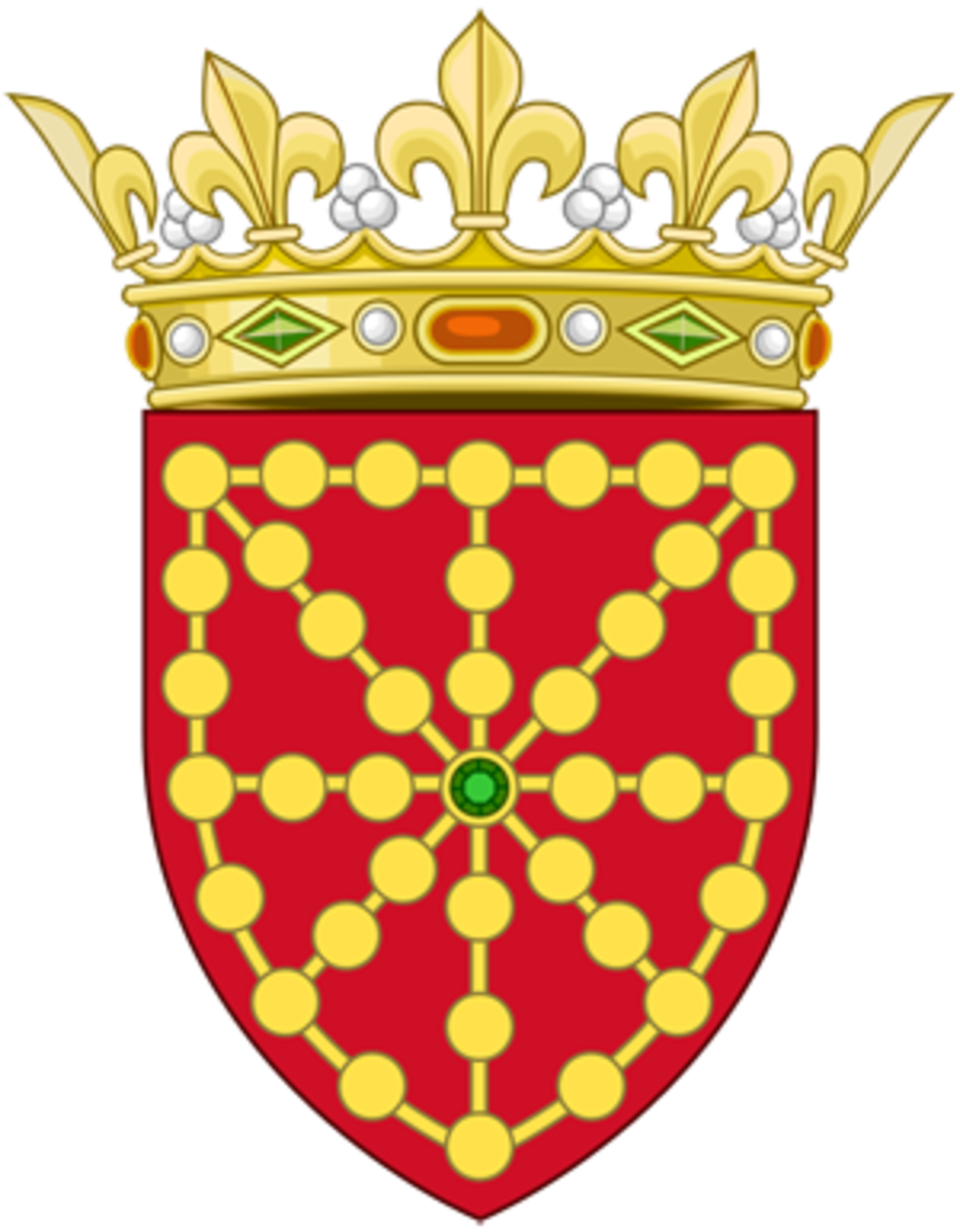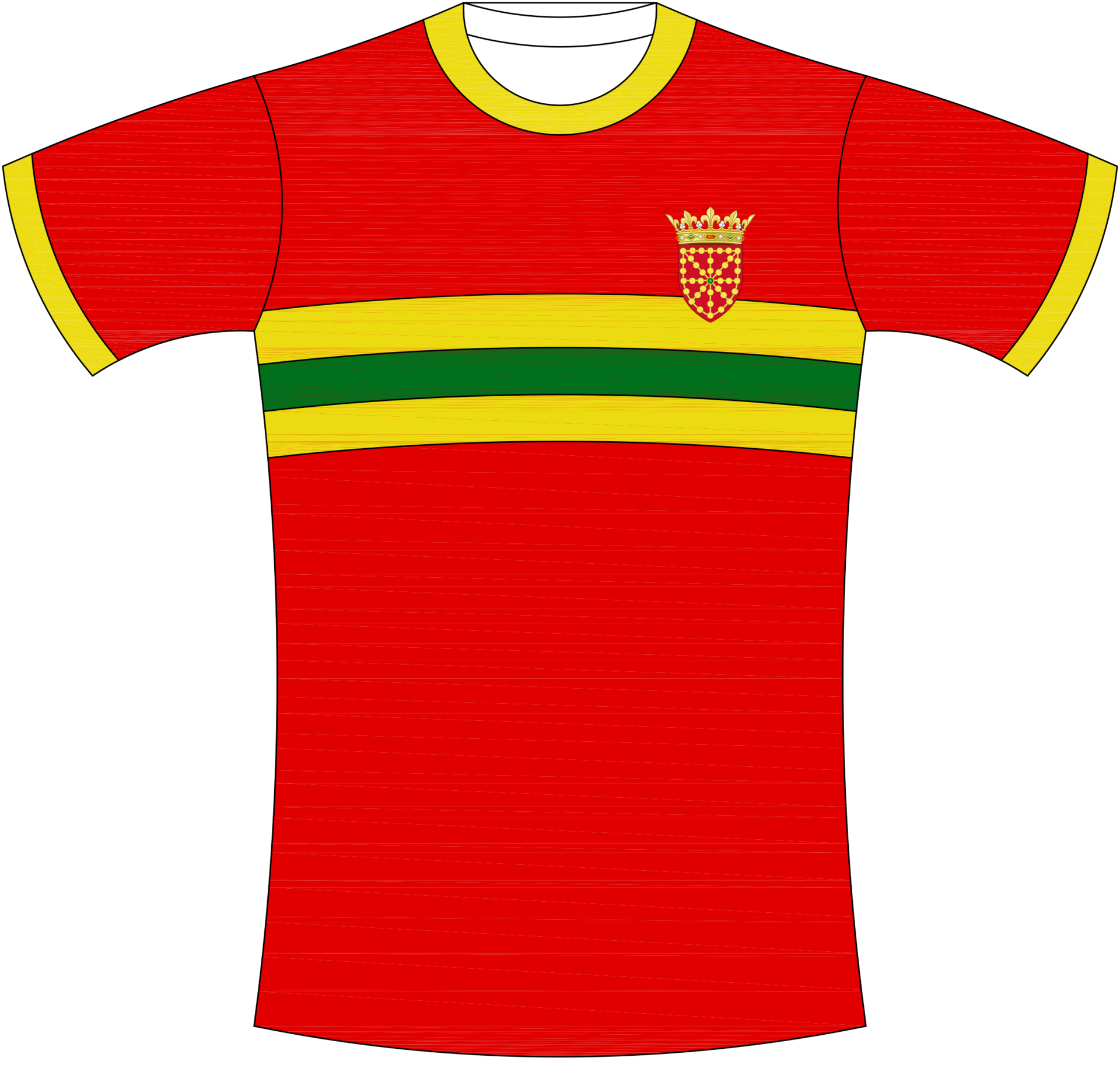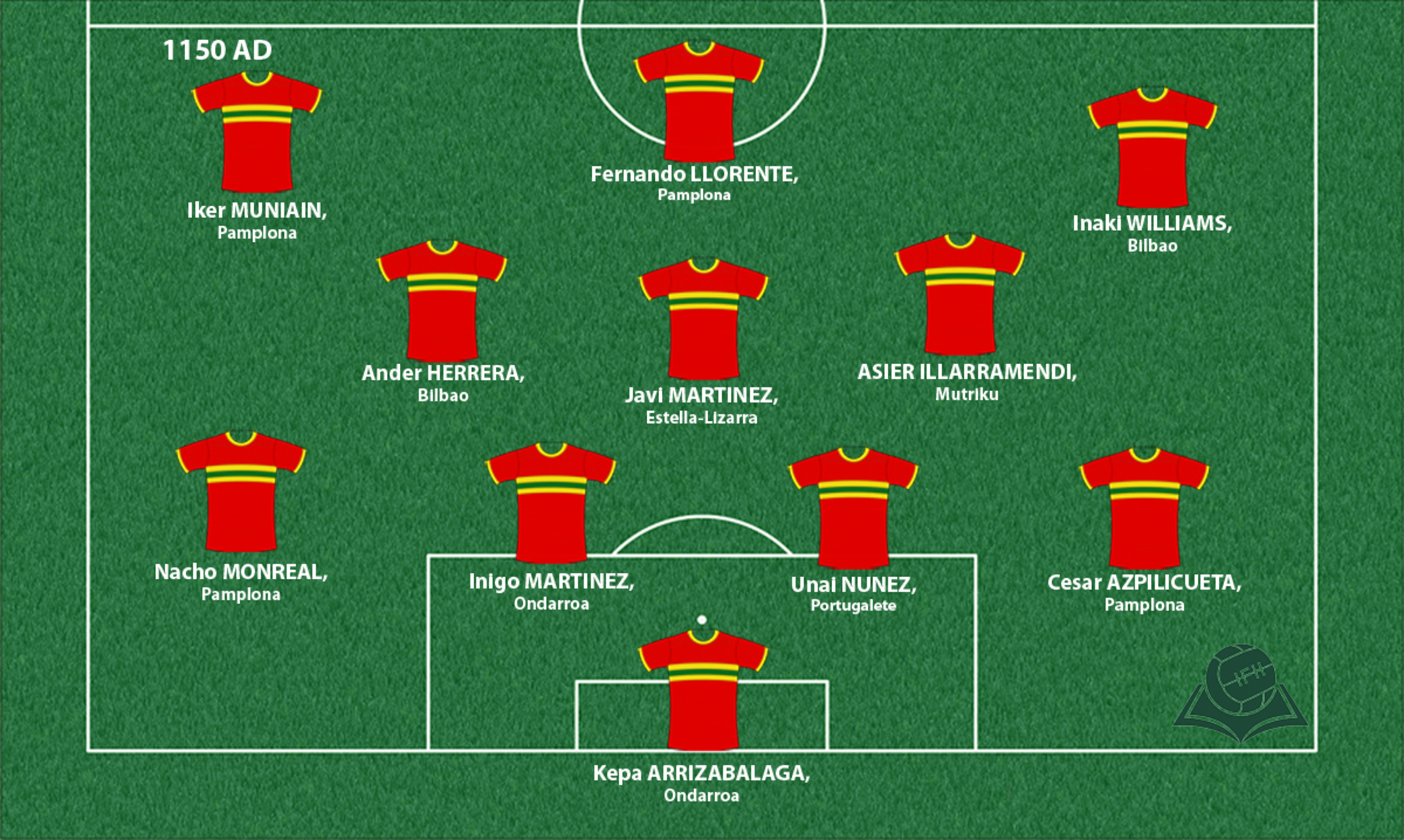Kingdom of Navarre
Pamplona was the center of the region with a dominant Basque language, and their elites had, with the help of Muslim rulers in Cordoba, separated themselves from Frankish supremacy and founded their own kingdom at the beginning of the 9th century.

Coat of arms

Shirt
| Position | First name | Last name | Mjesto rođenja | Like | Dislike | |
|---|---|---|---|---|---|---|
| GK | Gorka | IRAIZOZ | Pamplona |
4 |
0 |
|
| GK | Kepa | ARRIZABALAGA | Ondarroa |
8 |
0 |
|
| DC | Inigo | MARTINEZ | Ondarroa |
6 |
0 |
|
| DC | Unai | NUNEZ | Portugalete |
0 |
1 |
|
| DC | Xabier | ETXEITA | Amorebieta-Etxano |
2 |
0 |
|
| DC | Yeray | ALVAREZ | Barakaldo |
1 |
0 |
|
| DRL | Cesar | AZPILICUETA | Pamplona |
13 |
0 |
|
| DRL | Inigo | LEKUE | Bilbao |
0 |
0 |
|
| DR | Alvaro | ODRIOZOLA | San Sebastian |
1 |
0 |
|
| DR/MR | Ander | CAPA | Portugalete |
0 |
0 |
|
| DR/MRC | Oscar | DE MARCOS | Laguardia |
5 |
0 |
|
| DL | Mikel | BALENZIAGA | Zumarraga |
2 |
0 |
|
| DL | Nacho | MONREAL | Pamplona |
4 |
0 |
|
| DL | Yuri | BERCHICHE | Zarautz |
1 |
0 |
|
| DC/DMC | Javi | MARTINEZ | Estella-Lizarra |
10 |
1 |
|
| DMC | Asier | ILLARRAMENDI | Mutriku |
6 |
0 |
|
| DMC/DC | Ander | ITURRASPE | Abadiño |
2 |
0 |
|
| DMC/DC | Mikel | SAN JOSE | Pamplona |
2 |
1 |
|
| MC | Ander | HERRERA | Bilbao |
8 |
0 |
|
| MC | Benat | ETXEBERRIA | Igorre |
1 |
0 |
|
| MC | Mikel | MERINO | Pamplona |
4 |
0 |
|
| AMC/SS | Raul | GARCIA | Pamplona |
6 |
0 |
|
| AMRLC | Xabi | PRIETO | San Sebastián |
4 |
0 |
|
| AMRL/DR | Alex | BERENGUER | Pamplona |
3 |
0 |
|
| AMRL | Iker | MUNIAIN | Pamplona |
8 |
2 |
|
| AMRL | Markel | SUSAETA | Eibar |
3 |
0 |
|
| AMRL | Mikel | OYARZABAL | Eibar |
1 |
0 |
|
| FRLC | Inaki | WILLIAMS | Bilbao |
9 |
0 |
|
| FC | Artiz | ADURIZ | San Sebastian |
4 |
0 |
|
| FC | Fernando | LLORENTE | Pamplona |
5 |
0 |
|
| FC | Imanol | AGIRRETXE | Usurbil |
2 |
0 |
|
| FC | Kenan | KODRO | San Sebastián |
2 |
0 |
(Today part of: region Basque in Spain)
Nevertheless, starting in the 10th century, it had gained military strength, broke their formal alliance with Cordoba, and formed ties with the neighboring Christian Kingdom of Leon. In specific decades of the 11th and 12th century it will be a vassal of the king of Castile and Leon, and it will reach its territorial peak under the king Sancho VI (ruled 1150 – 1194), who is the only ruler to unify all Basque lands south of the Pyrenees. His rule will be marked by wars with the aforementioned Christian kingdoms, as well as the changing of his title from the King of Pamplona to the King of Navarre, after the County of Navarre, which stands as the core of the original kingdom which had surrounded Pamplona. The dominant identity in the state was the Basque one. They had inhabited areas on both sides of the Atlantis Pyrenees. The foundation of their identity was their language, specific in its non-Indo-European origins, as opposed to other European languages, which could lead us to a conclusion that the Basque represent the remnants of a pre-Indo-European people. The harshness of the mountainous land, covered in history with thick forests, had probably contributed to its preservation.
The main characteristic of the Basque society, which had differentiated them from other neighboring peoples, was the inheritance of the entire estate, which was inherited by the firstborn son. Aside from the Basque element in the state, around Pamplona the inhabitants had developed their own Navarre identity, together with their own Romanesque language. Despite the proof of early Christianization in the plains, the remote mountain areas had virtually remained pagan until the 12th century. Although slowly, the conversion to Christianity was thorough, as is shown by the permanent legacy of clericalism and dogmatism. The Basque had started strong spiritual initiatives which would enrich the Catholic world in the coming centuries – from the Jesuits to Opus Dei.
Sources
- Felipe FERNANDEZ-ARMESTO, Narodi Europe, Zagreb, 1997.,
- ''Kingdom of Pamplona'',https://en.wikipedia.org/wiki/Kingdom_of_Pamplona#County_of_Pamplona
- Grb: ''Kingdom of navarre''https://en.wikipedia.org/wiki/Kingdom_of_Navarre
